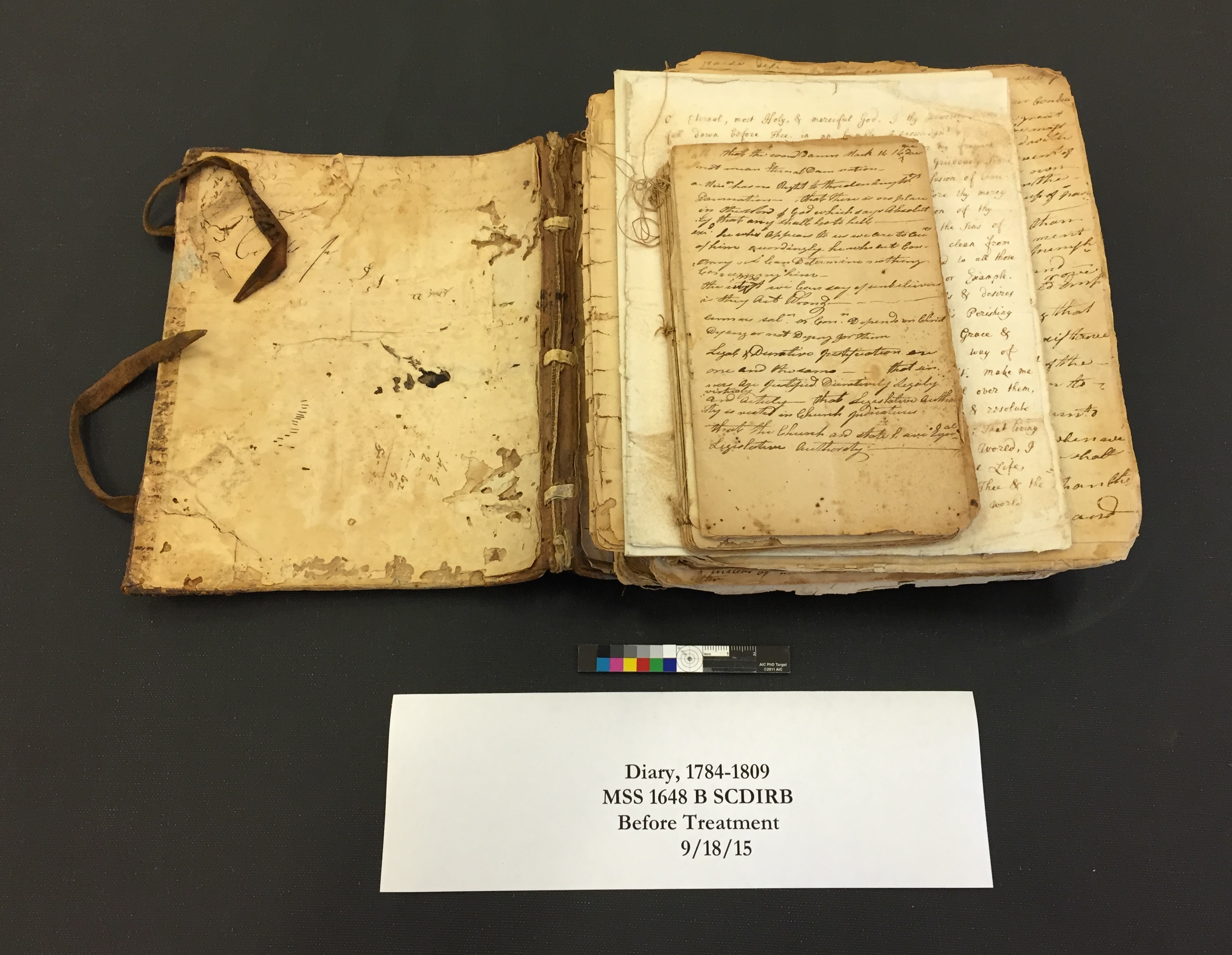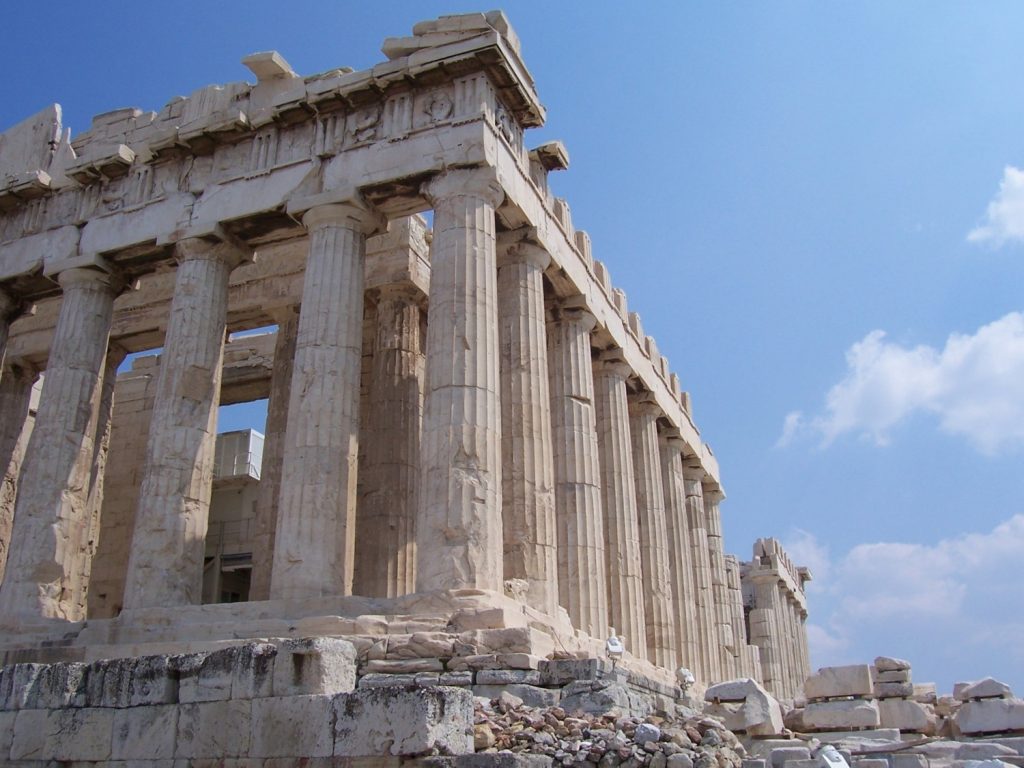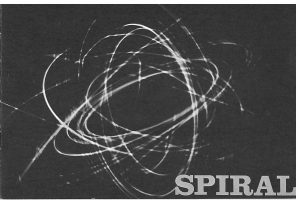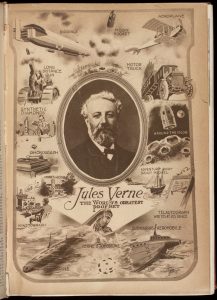The conservation of manuscript pages can be very tricky. In the case of the McAuley Diary, from our Dibner Library of the History of Science and Technology, there were many issues. The manuscript consisted of multiple sized unbound sections housed together in a leather cover that was far too small for its contents. The pages were nearly all crumpled and torn and many pages had areas of loss. In this condition the text was not legible and attempts to turn pages could result in further damage from tearing. We proceed cautiously with hand written documents as many inks become unstable over time and are very sensitive to water.




